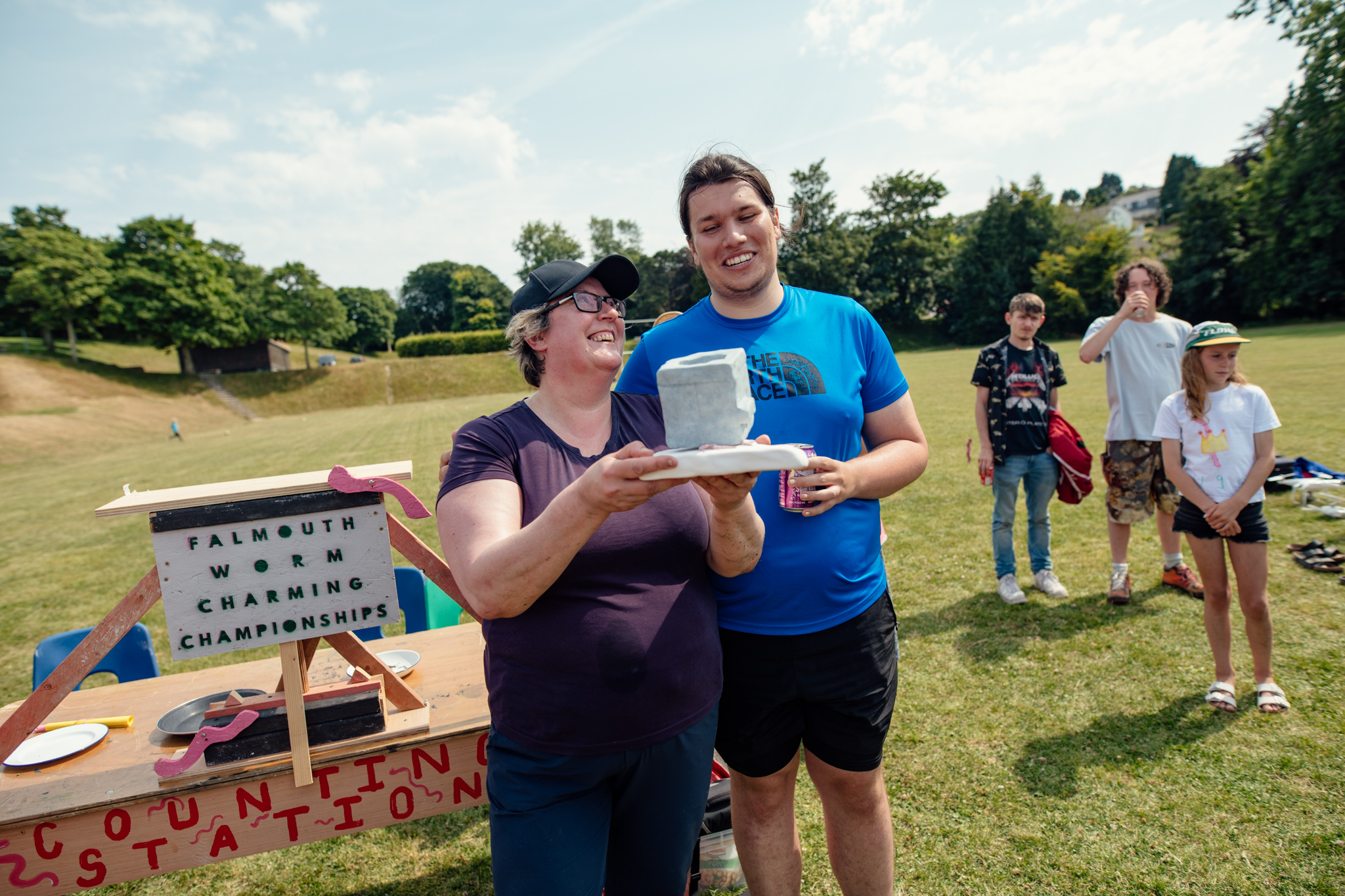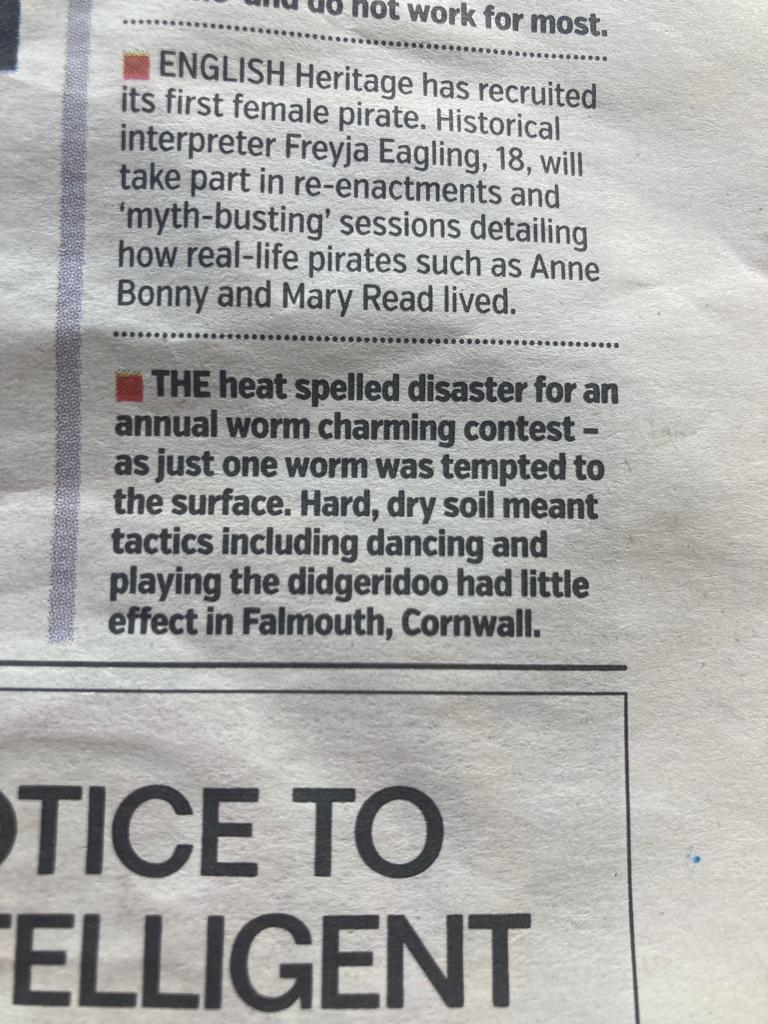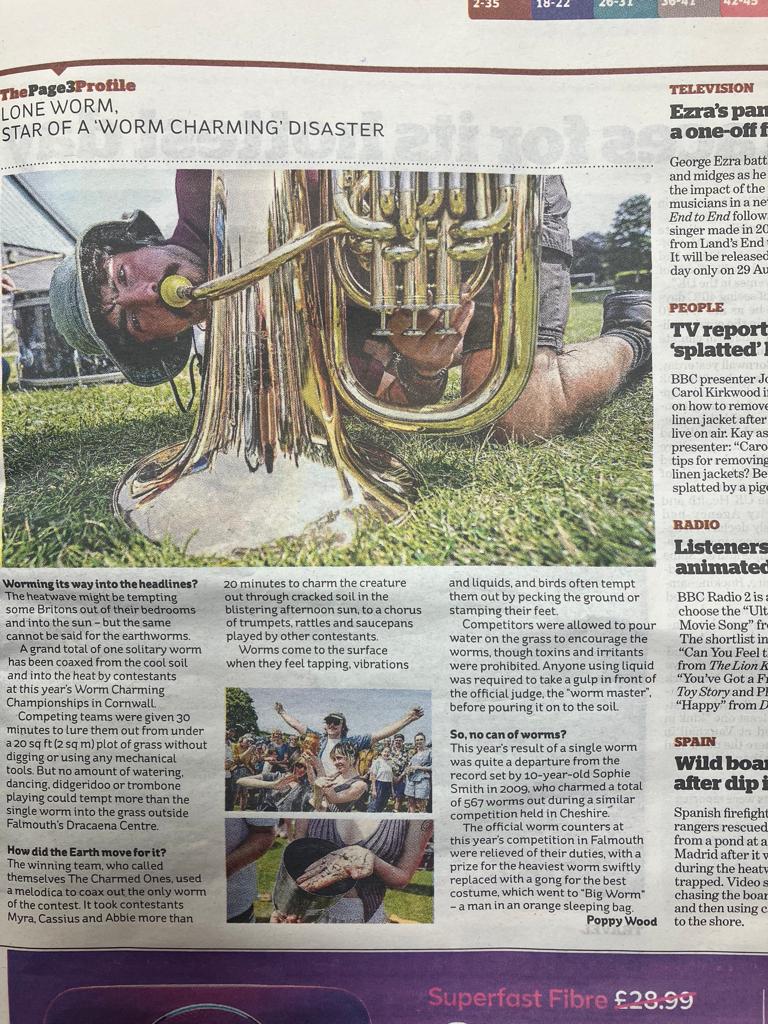


Worm charming, or worm grunting and worm fiddling are word to describe the act of enticing earthworms to the surface of the earth. As a skill and profession worm charming is now very rare, with the art being passed through generations to ensure that it survives.
Most worm charming methods involve vibrating the soil, which encourages the worms to the surface. In 2008, researchers from Vanderbilt University claimed that the worms surface because the vibrations are similar to those produced by digging moles, which prey on earthworms. Worm charming is a behaviour also observed in animals other than humans, especially among birds. The methods used vary; however, tapping earth with feet to generate vibrations is widespread. One common example is the "Seagull dance".
In most competitions the fiddlers with the collector (or collectors) of the most worms in a set time are declared as the winners. They usually have a zone in which to perform their charming, measuring three yards square. The current world record was established on June 29, 2009, by 10-year-old Sophie Smith of Willaston, England, who raised 567 worms during Britain's World Worm Charming Championship.
On the 17th July 2022, Gendall hosted Falmouth first ever worm charming championships. There was only one worm charmed

















Photo credit Dom Moore and Greg Martin